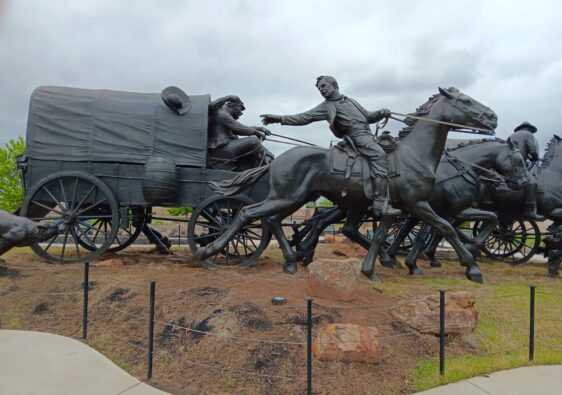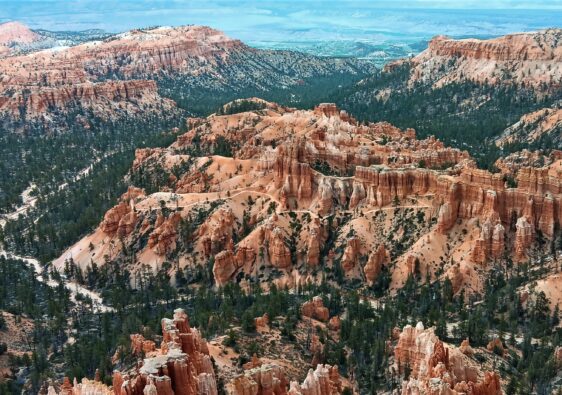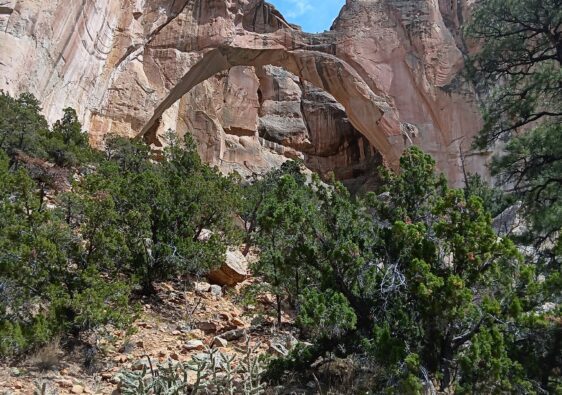Bandelier National Monument and Valles Caldera National Preserve
If you find yourself in the vicinity of Santa Fe or Los Alamos, New Mexico, a trip to Bandelier National Monument and Valles Caldera National Preserve need to be on your agenda. We took a day trip out of Santa Fe, traveling to Bandelier, Valles Caldera, and a section of the Jemez Mountain Scenic Byway. It was a packed day, with a lot of driving, but made sense for us because these locations were far enough from Santa Fe to justify seeing them all in one day. If your lodging is in Los Alamos, it would make more sense to break up the visits over a couple of days.
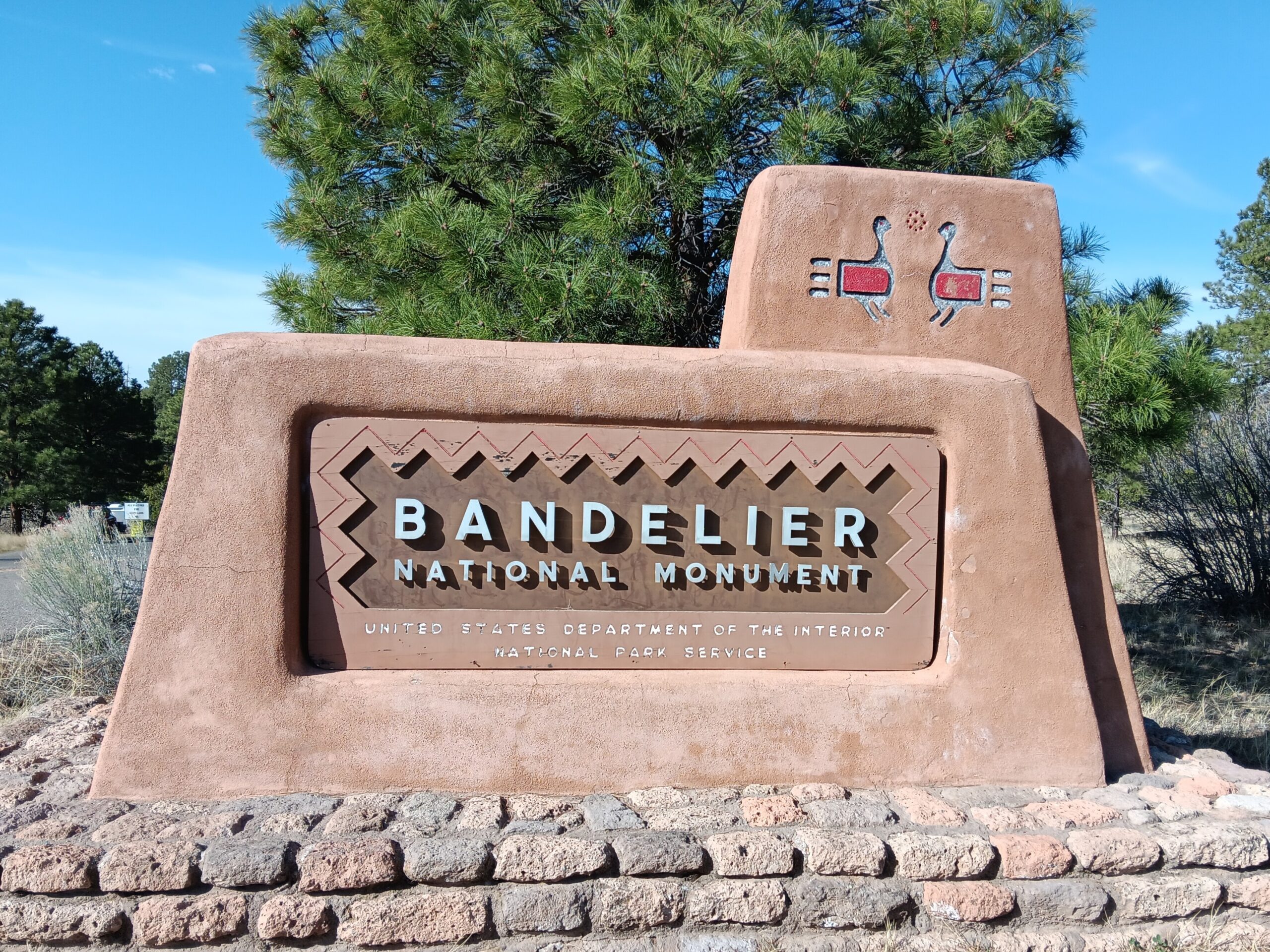

Bandelier National Monument
Bandelier National Monument is a 33,000 acre park encompassing the Frijoles Canyon and surrounding mesas. This area was home to Ancestral Pueblo people from around 1150 AD to 1550 AD, at which point, drought and climate conditions forced them to move elsewhere.
The park’s Pueblo Loop Trail is a 1.4 mile loop that allows you to explore fascinating archeological sites. You can also add in the 1 mile round trip trail to Alcove House. The visitor center also has a museum with exhibits where you can learn more about the Ancestral Pueblo people.
Alcove House
The Alcove House is 140 feet above the floor of Frijoles Canyon. It is thought to be the home of approximately 25 Ancestral Pueblo people and also probably served ceremonial purposes. The only way you can see this close up is by climbing. There are a total of 4 wooden ladders of varying lengths, and numerous stone stairs. The picture below shows the top section of the climb and a warning sign!




I’m not going to deny it… I’m not a fan of heights. I was holding on so tightly on each ladder that I needed to take a break between them to catch my breath and get the adrenalin rush under control.


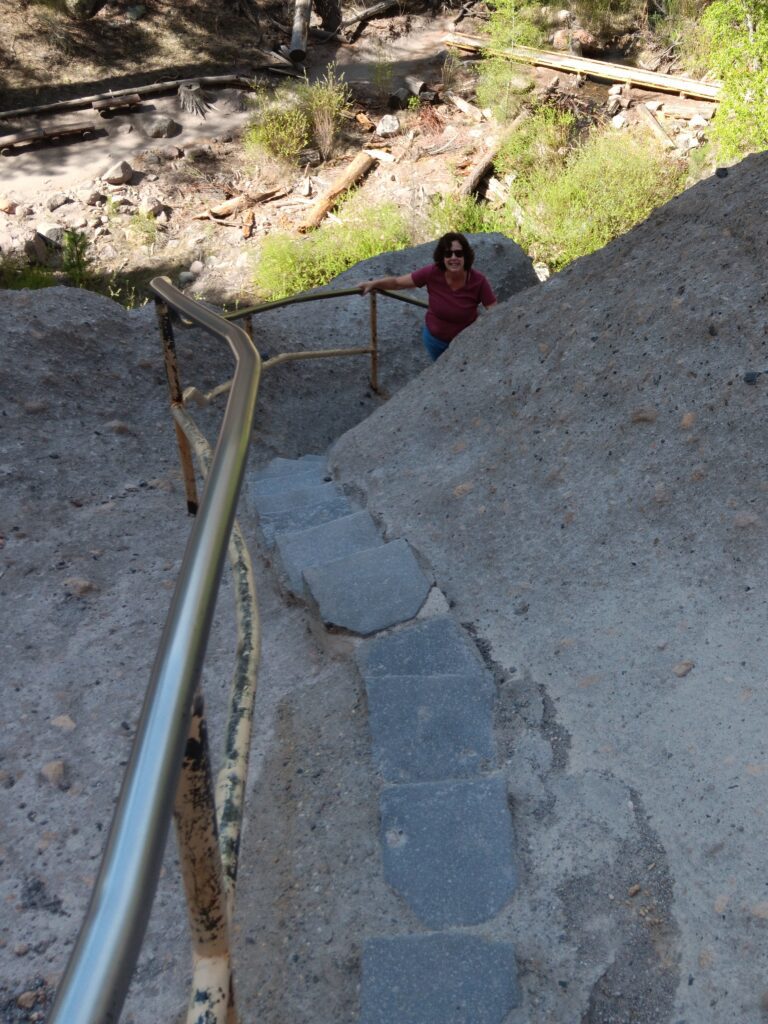

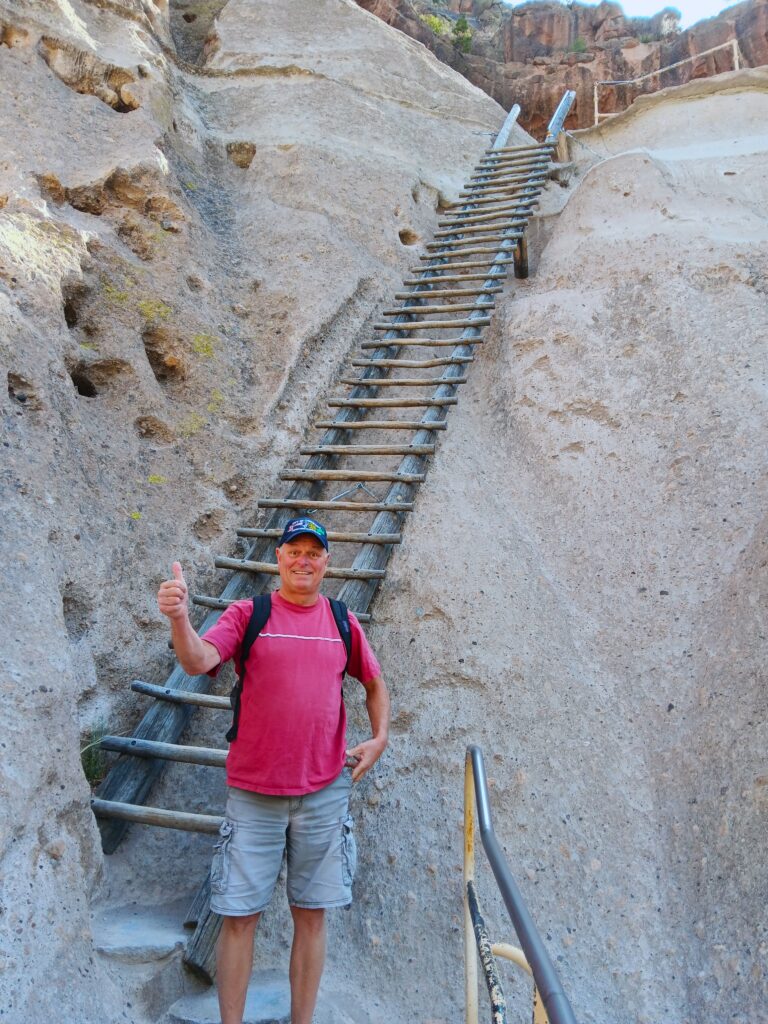

As you can see, we made it! At the top, there was a ceremonial kiva, and also some door like openings in the cliff walls to a couple of cavates (alcoves carved by the Ancestral Puebloans).
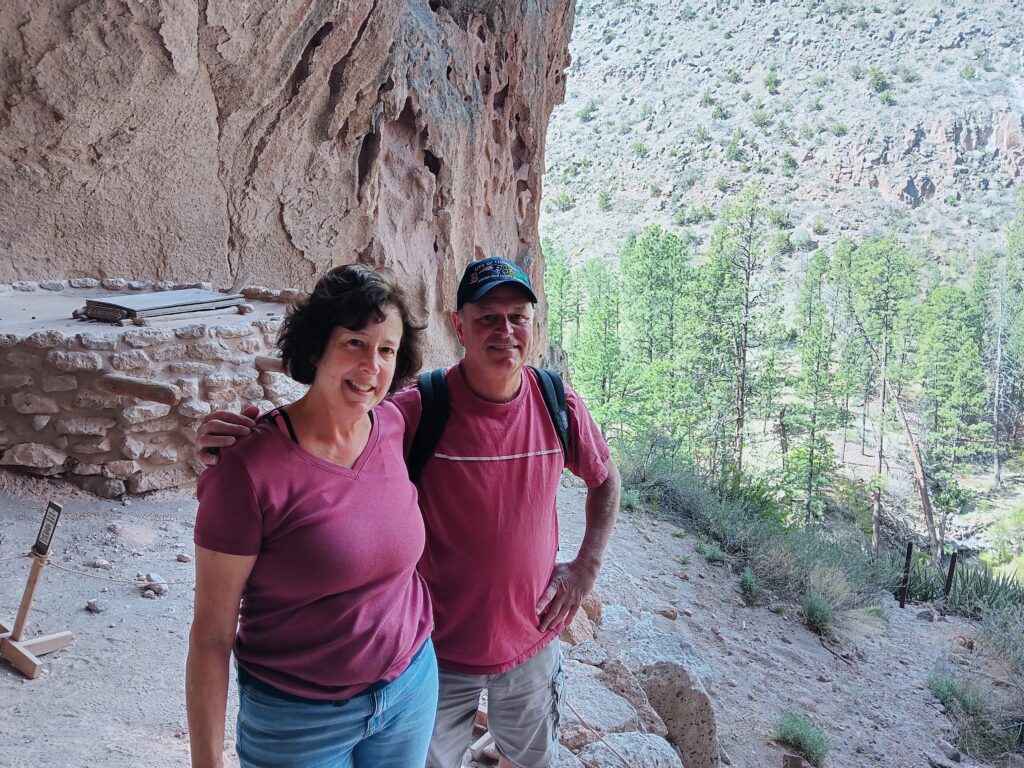

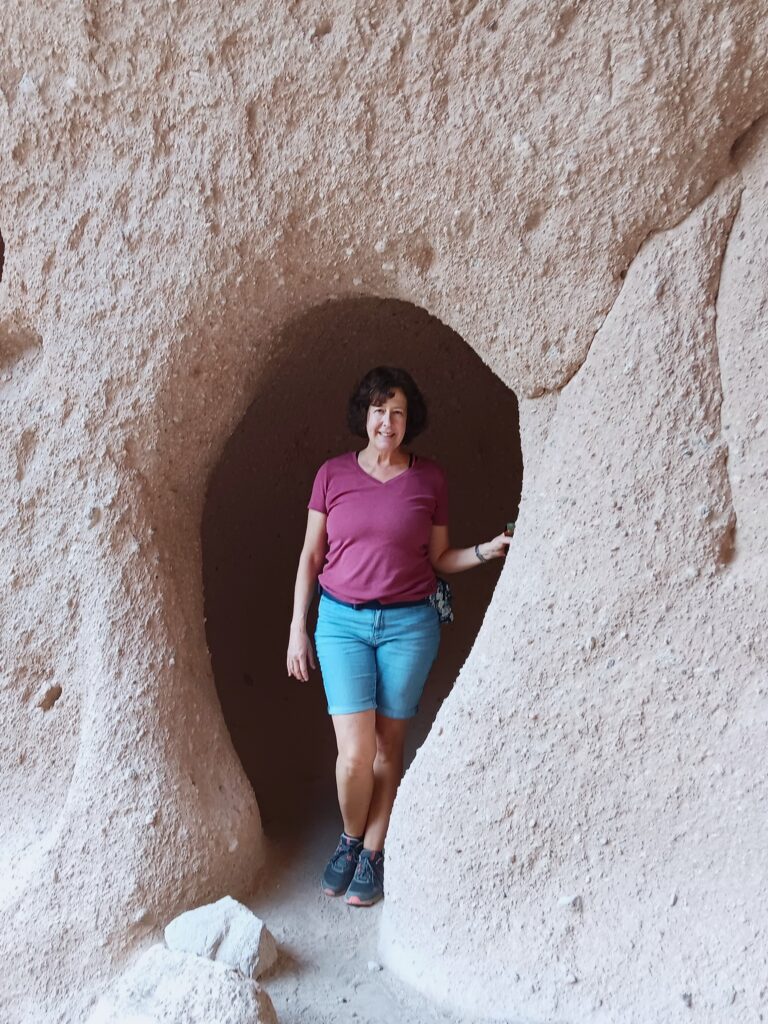

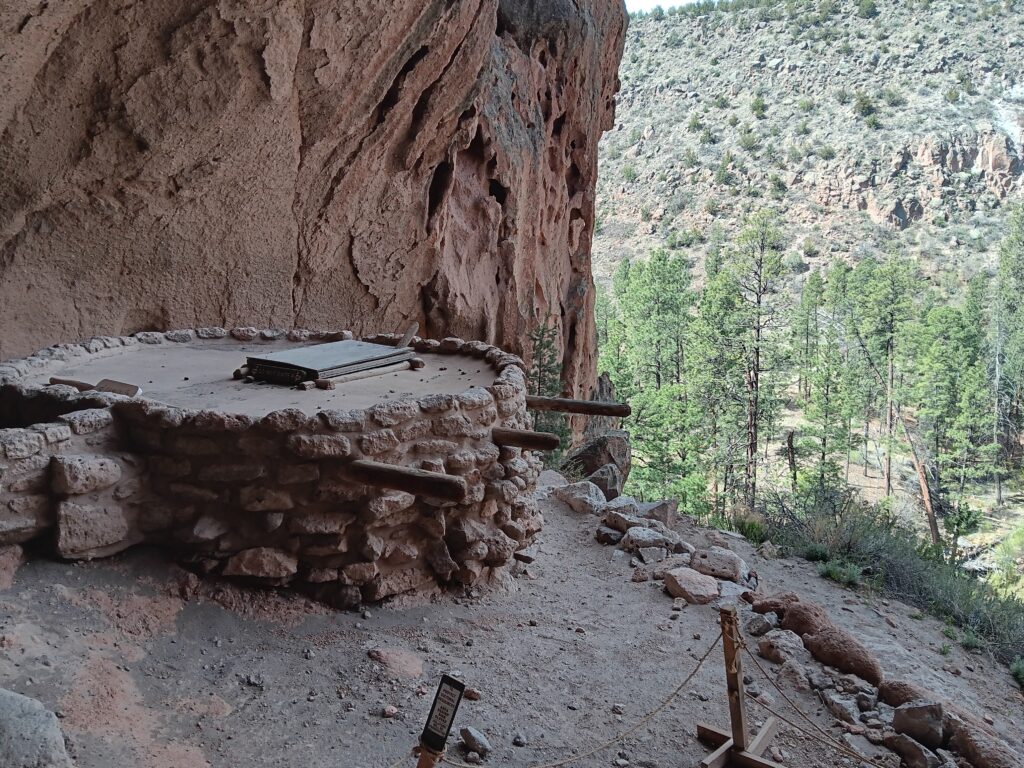

As you might expect, going down those ladders was worse, partly because I wouldn’t look down (or back at Steve who tried to get a picture of me hanging on for dear life).
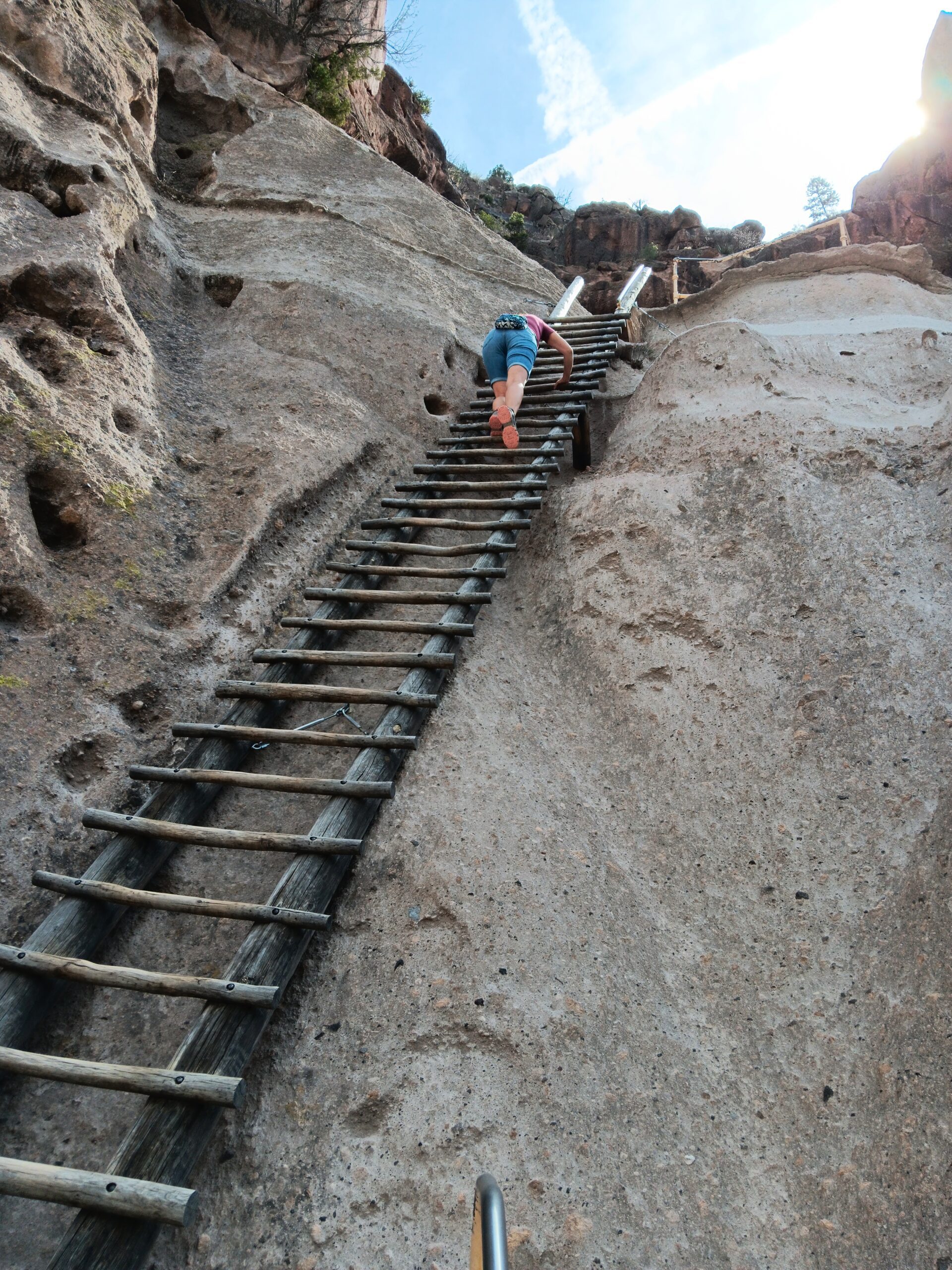

Cliff Dwellings
The 1.4 mile Pueblo Loop Trail takes you through the ruins of a Pueblo settlement that included cliff dwellings, many of which would have been several stories tall since they leaned against the cliff. You can purchase a park map for $2 that has information about each of the 21 numbered stops on the trail. The trail itself has some steep sections and stairs that can be bypassed if necessary.
Long House is one of those 21 stops and, here, it is easier to imagine what these multi-story cliff dwellings looked like. You can see rows of holes, that were insertion points for logs that helped provide support for the various levels. The cavates are rooms carved into the cliff and there are over 1000 in Frijoles Canyon.


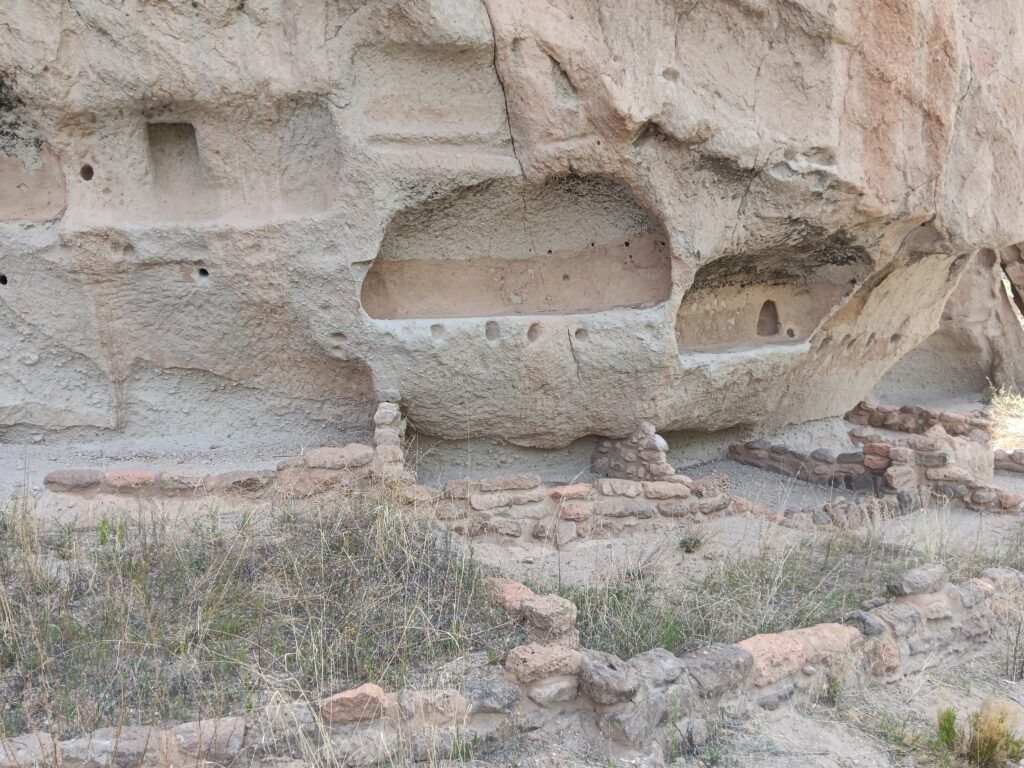



You could see Petroglyphs (carvings) along the loop trail but most were hard to make out. Ancient Pictographs (paintings) are also visible on the cliff walls like this one that is preserved behind plexiglass.
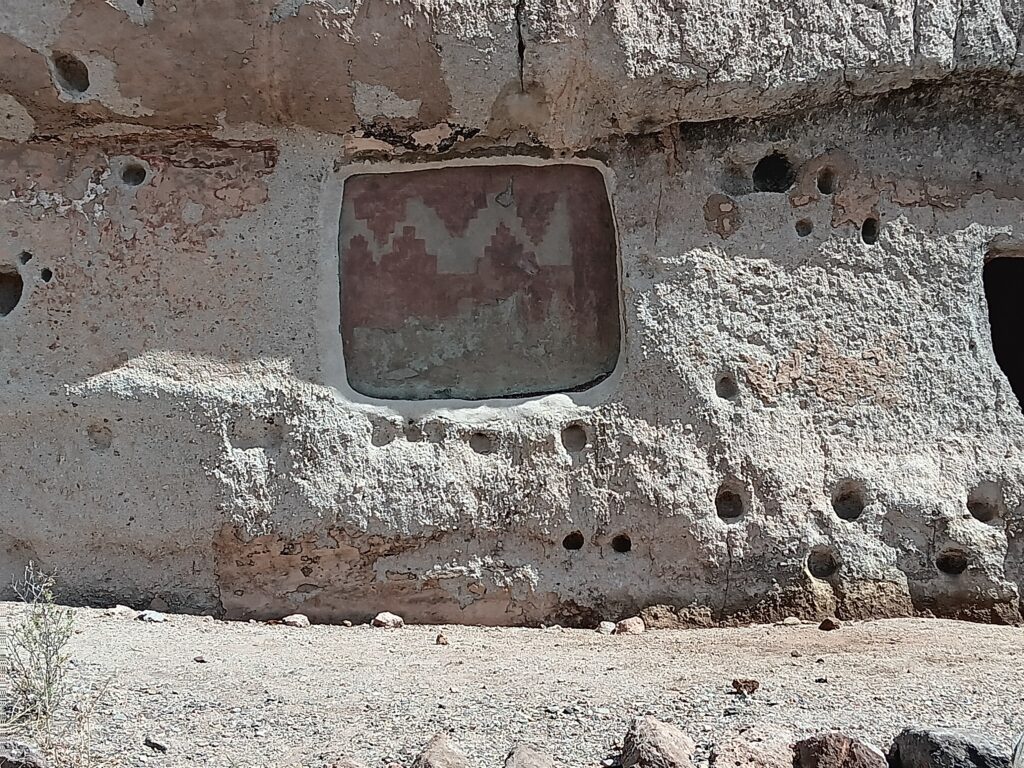

Some of the dwellings have been partially restored so you can climb up a short ladder to take a peek.
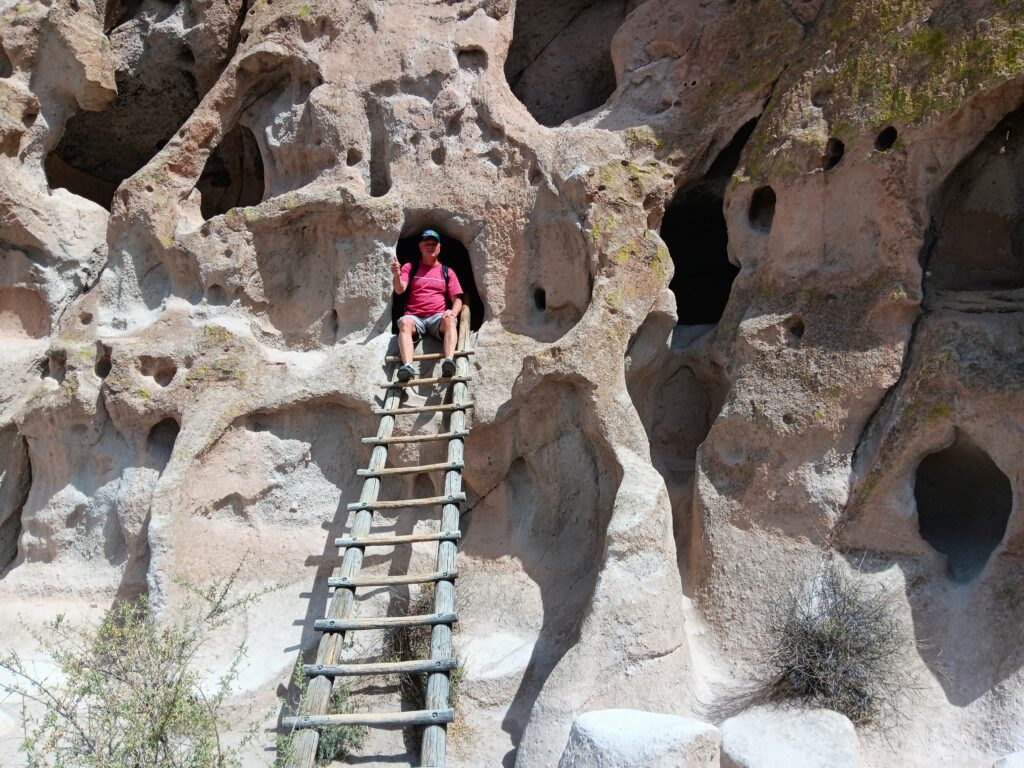

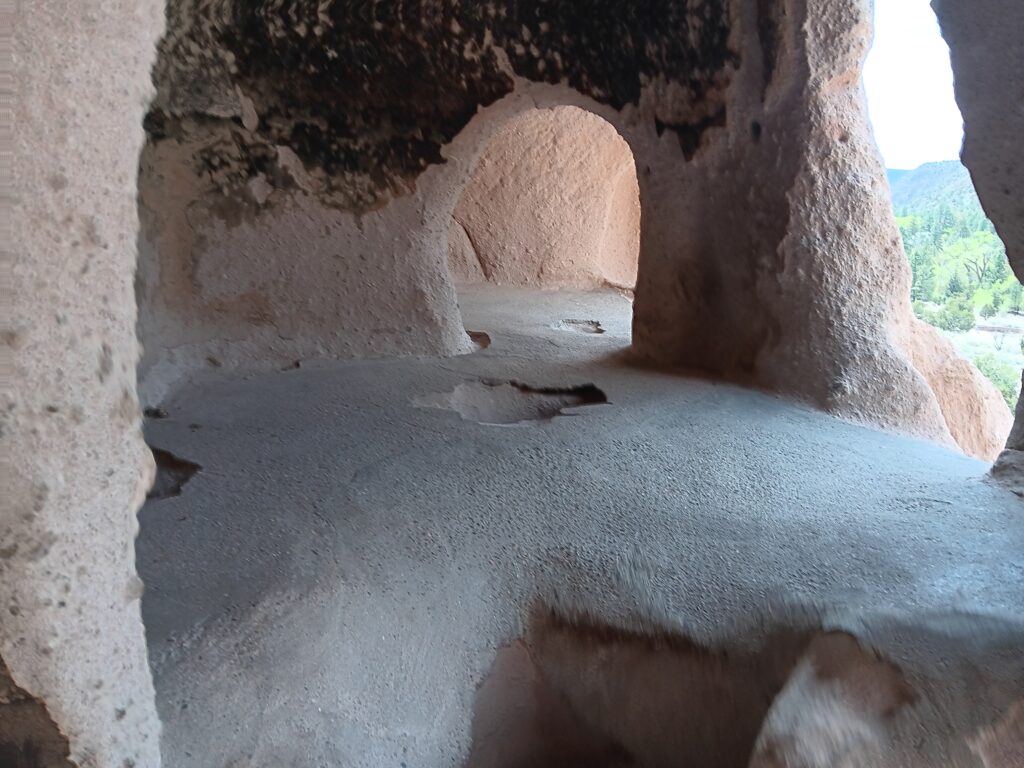

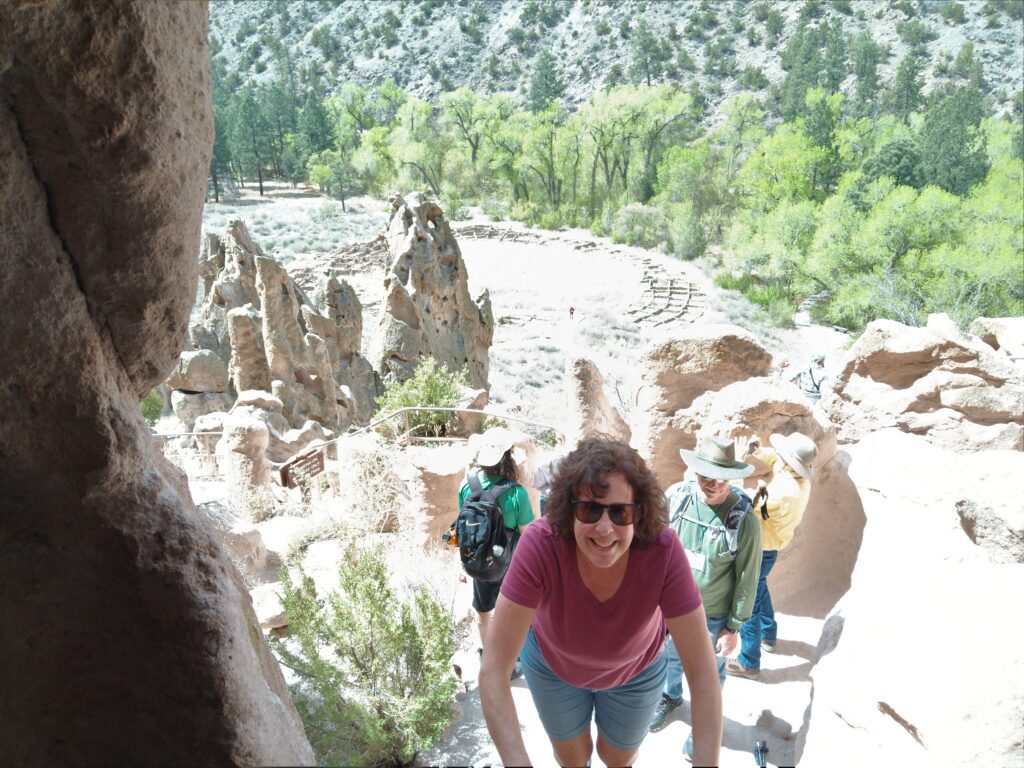

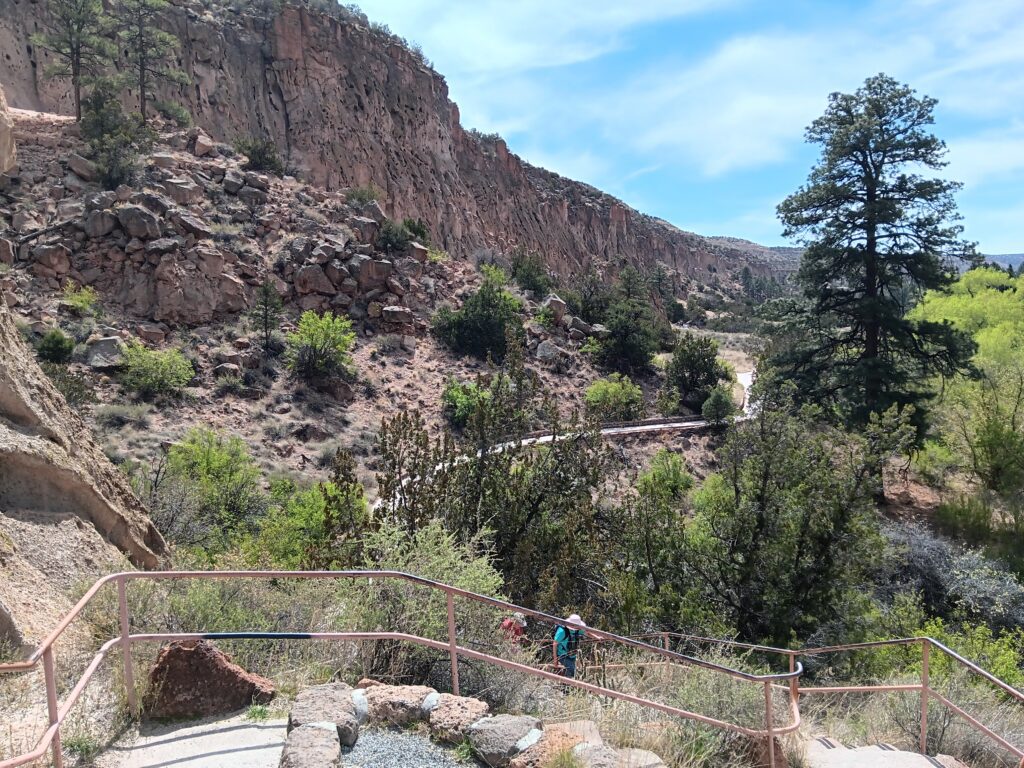

The cliff walls were fascinating, with holes and indentations from erosion everywhere. You can see why the Pueblo people would choose to make homes in these soft cliff walls. I wonder if they saw a ghost face like I do here!
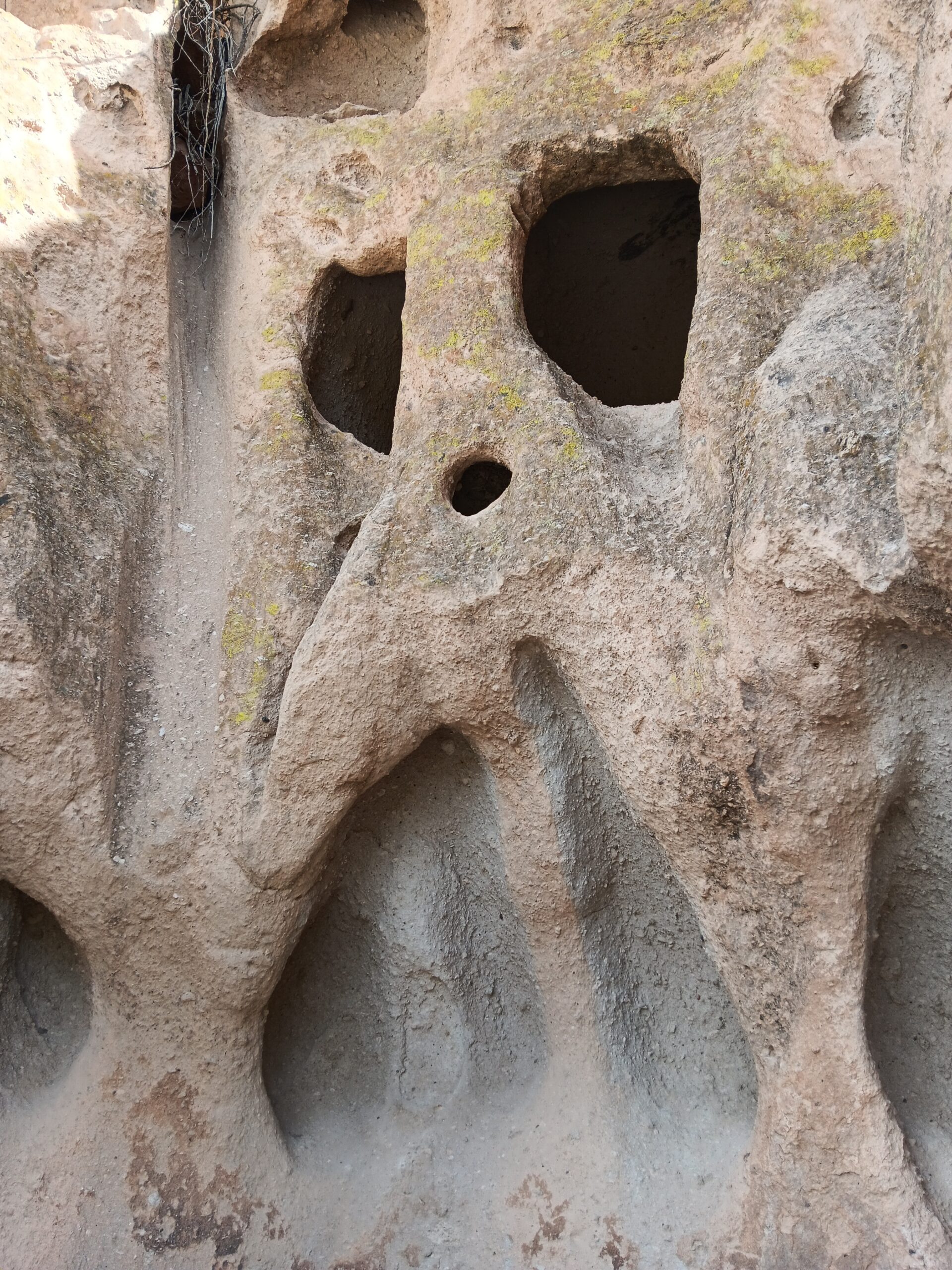

Tyuonyi Pueblo and Big Kiva
The paved trail took us through the remains of Tyuonyi Pueblo which is estimated to have housed 100 people, in addition to the people in the cliff dwellings. Tyuonyi probably had over 400 rooms and was two stories tall. Most of the rooms were likely used for food storage.




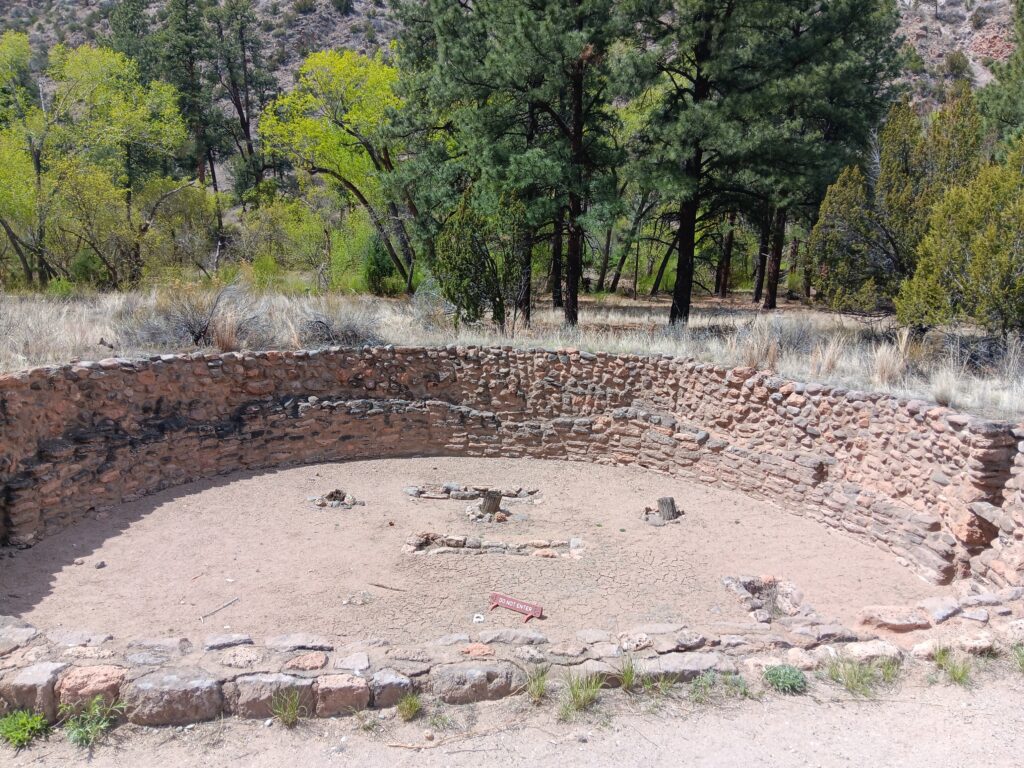

Big Kiva (above) was thought to be a communal meeting place, also used for ceremonial purposes.
Natural Beauty
In addition to the historical aspect of the part, Bandelier is a place of great natural beauty. There are many hiking trails within the park, so you could easily spend more time exploring.
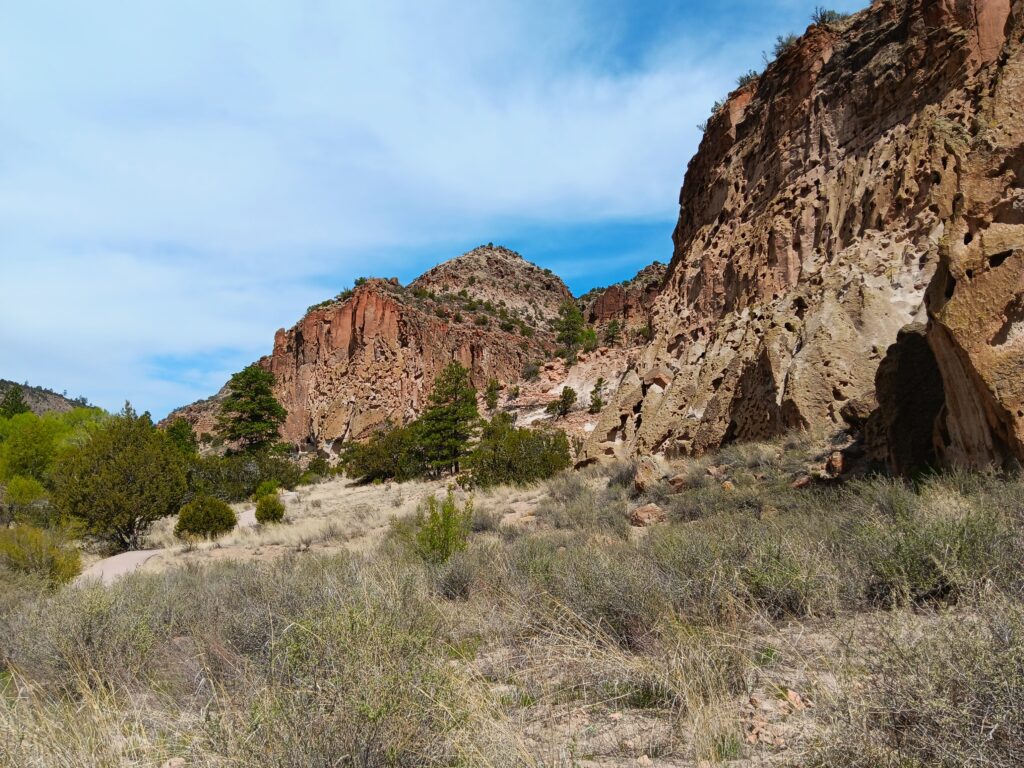

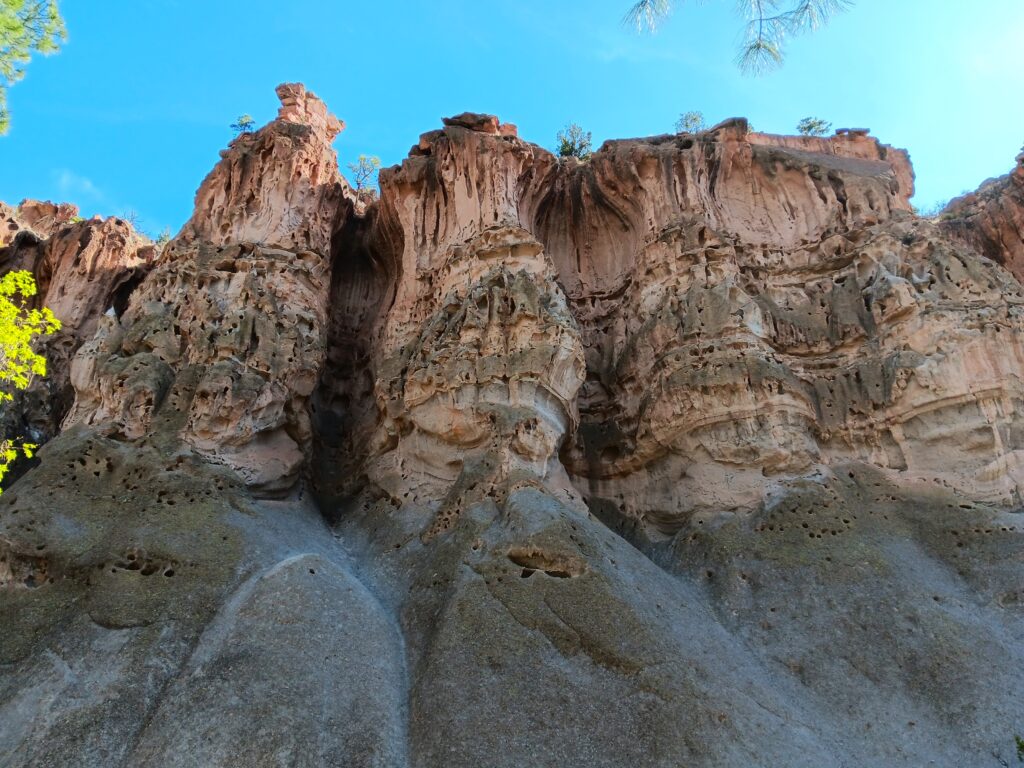

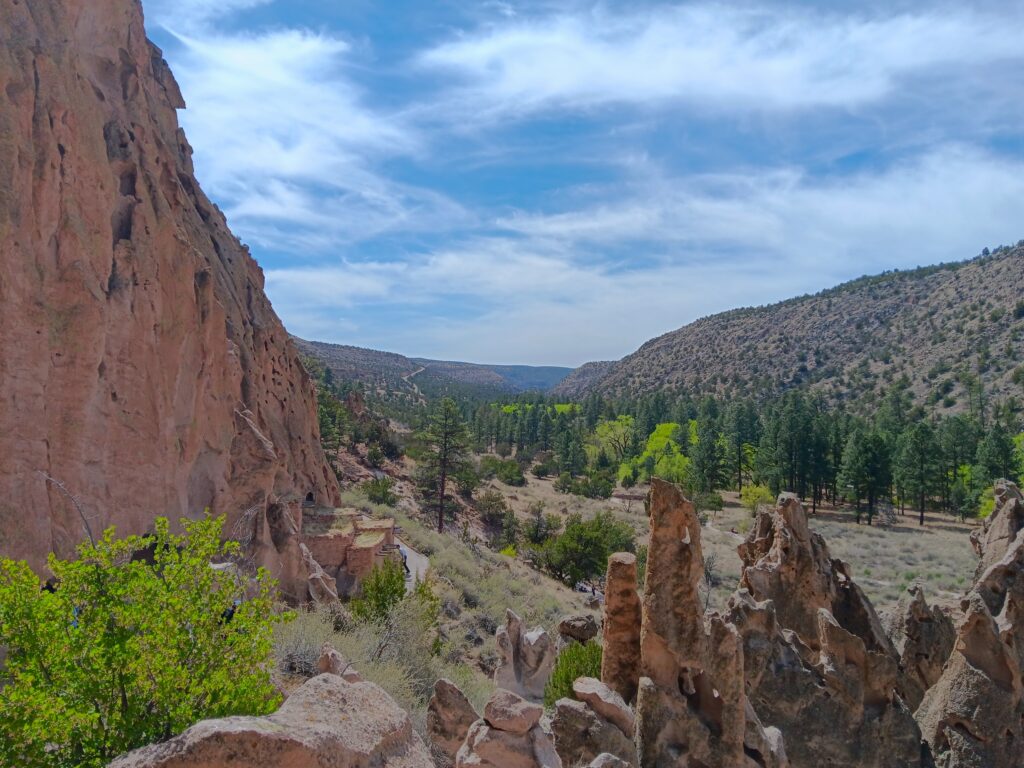



Bandelier Park Museum
Before we left we took a quick pass through the park museum, which was part of the Visitor Center. There were a couple of dioramas that depicted how the pueblo may have looked and exhibits of Ancestral Puebloan artifacts. One could also learn about the park’s geology and ecology.
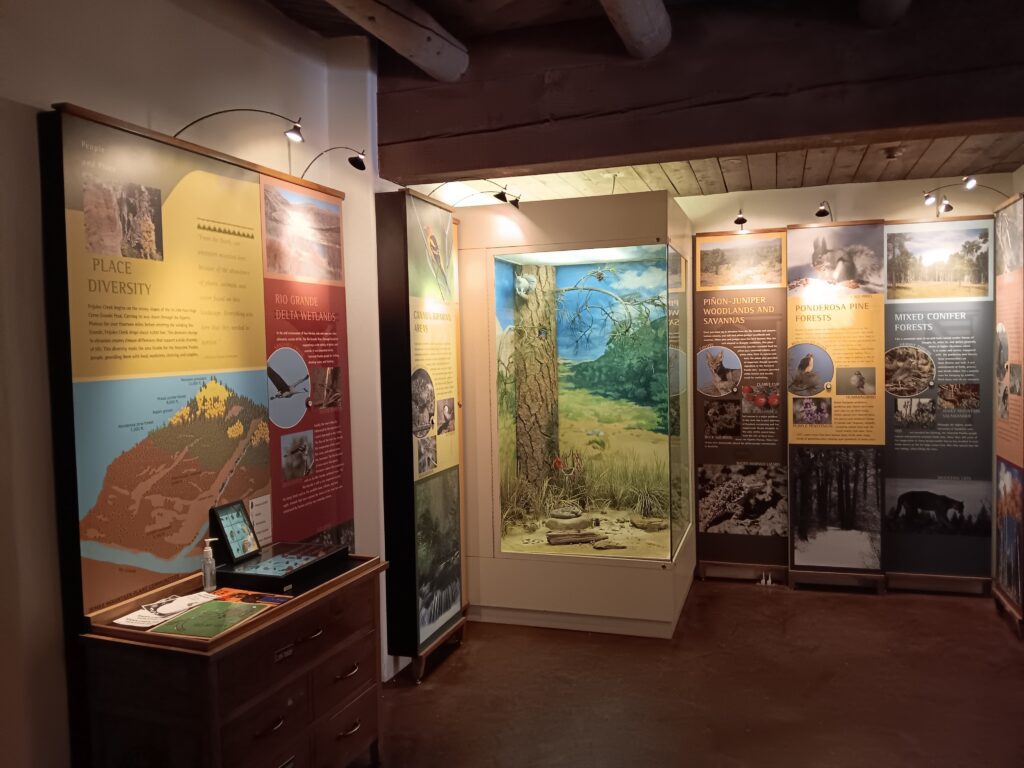



Valles Caldera National Preserve
Valles Caldera National Preserve is the site of an ancient volcano that exploded, creating a crater 13 miles in diameter. From our location, we could only see Valle Grande. Over time, hills literally popped up, due to volcanic forces in the middle of the crater, as well as along the crater ring to create this valley. In the summer, this valley is a gorgeous mountain meadow and elk roam the valley.
It was a little too early in the spring for much plant growth but the valley was starkly beautiful. We wanted to hike a trail or two, but the ground was very wet, so we just took time to have a picnic and enjoy the antics of the prairie dogs.
Valles Caldera has plenty of things to do for the outdoor enthusiast, including fishing, hiking, mountain biking, wildlife viewing and more.
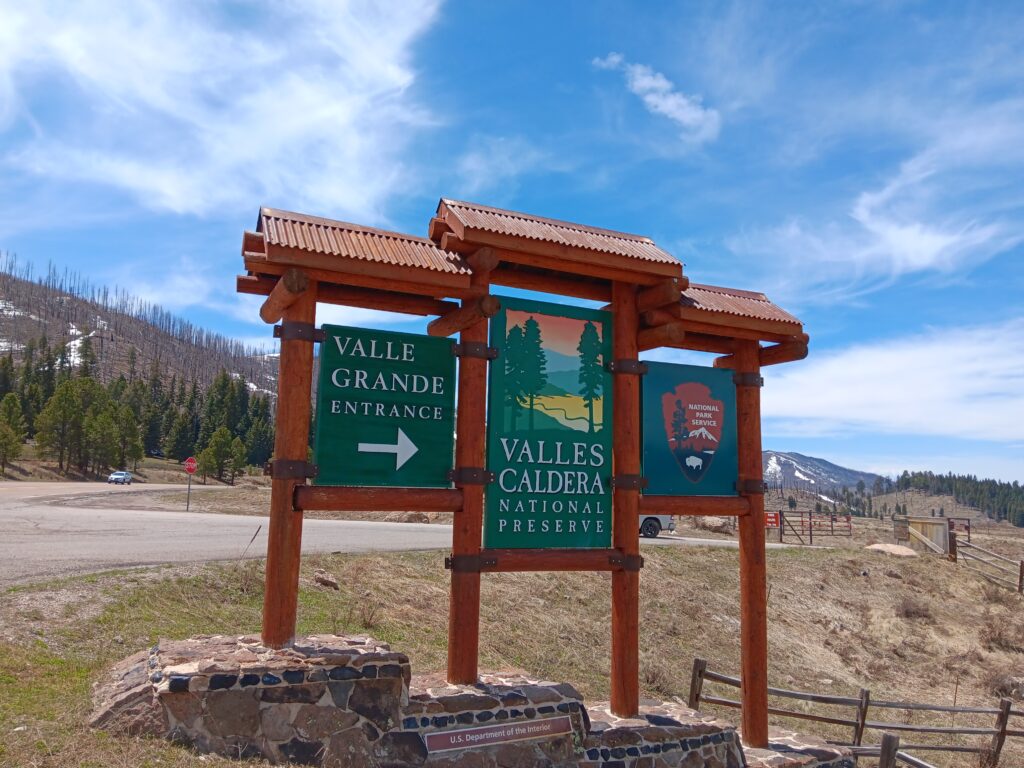

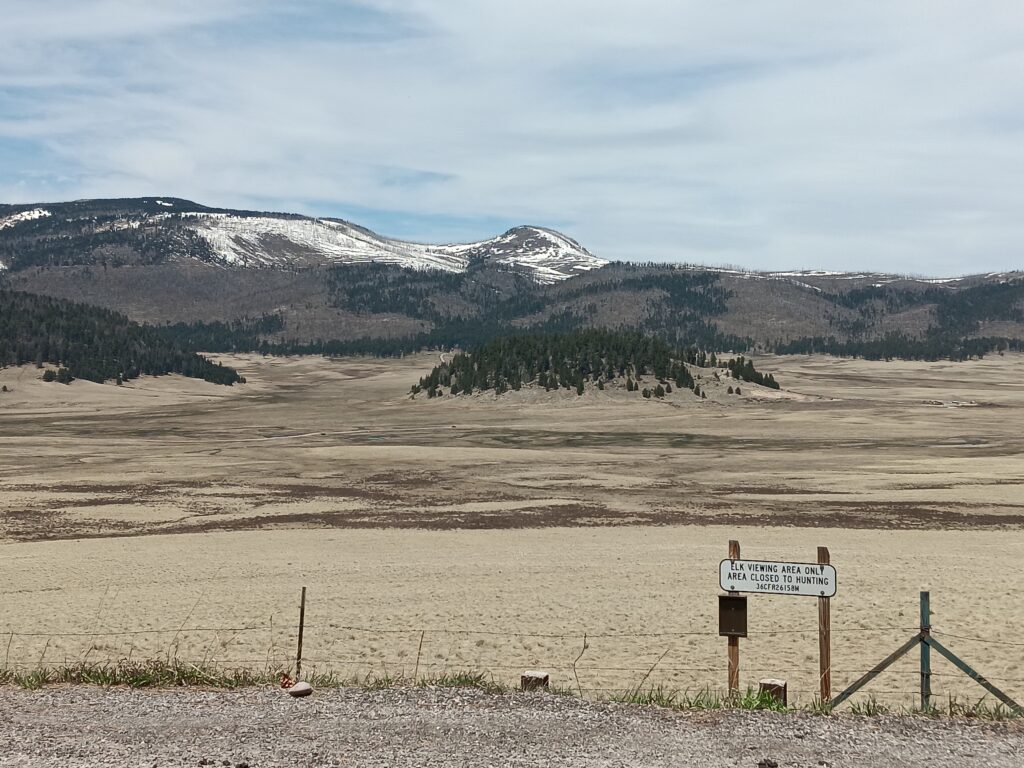

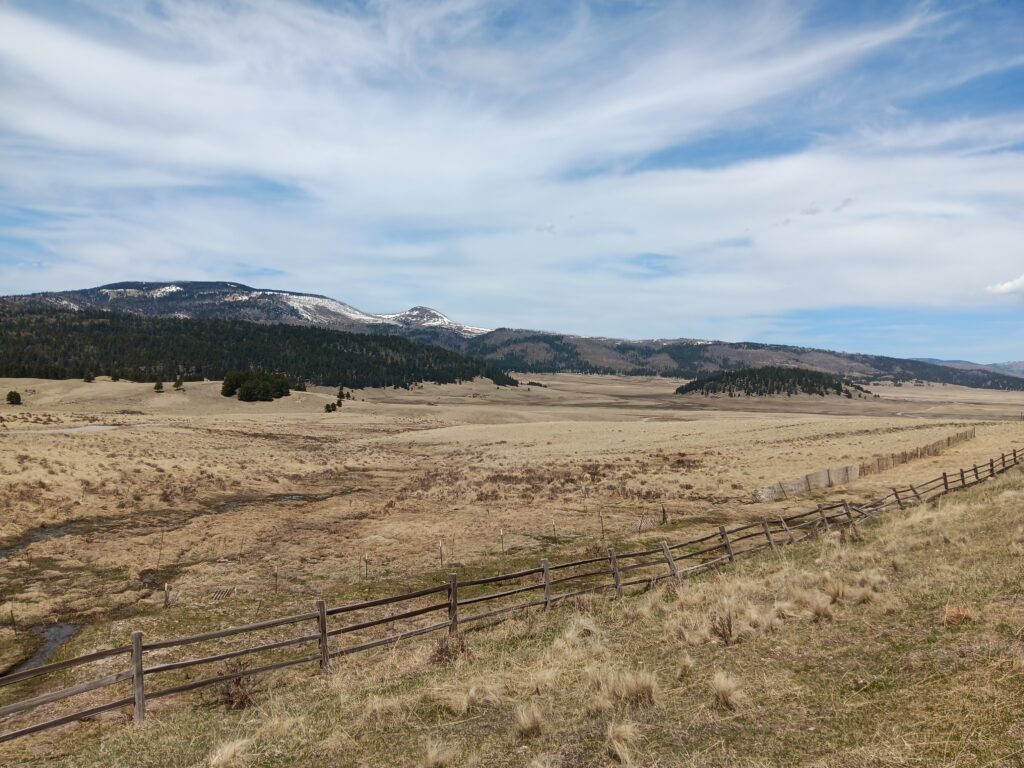

Jemez Mountain Scenic Byway
We traveled along on the Jemez Mountain Scenic Byway, stopping to hike a portion of the East Fork Trail via Las Conchas Trailhead. The trail followed a stream in a narrow canyon and was very beautiful.


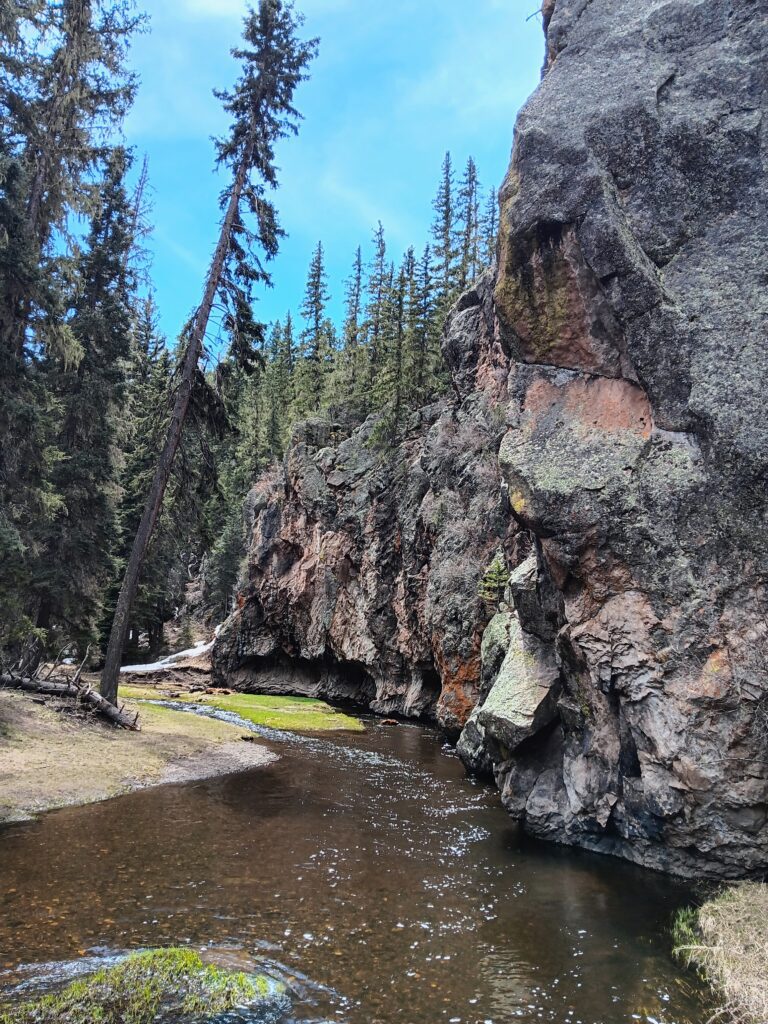

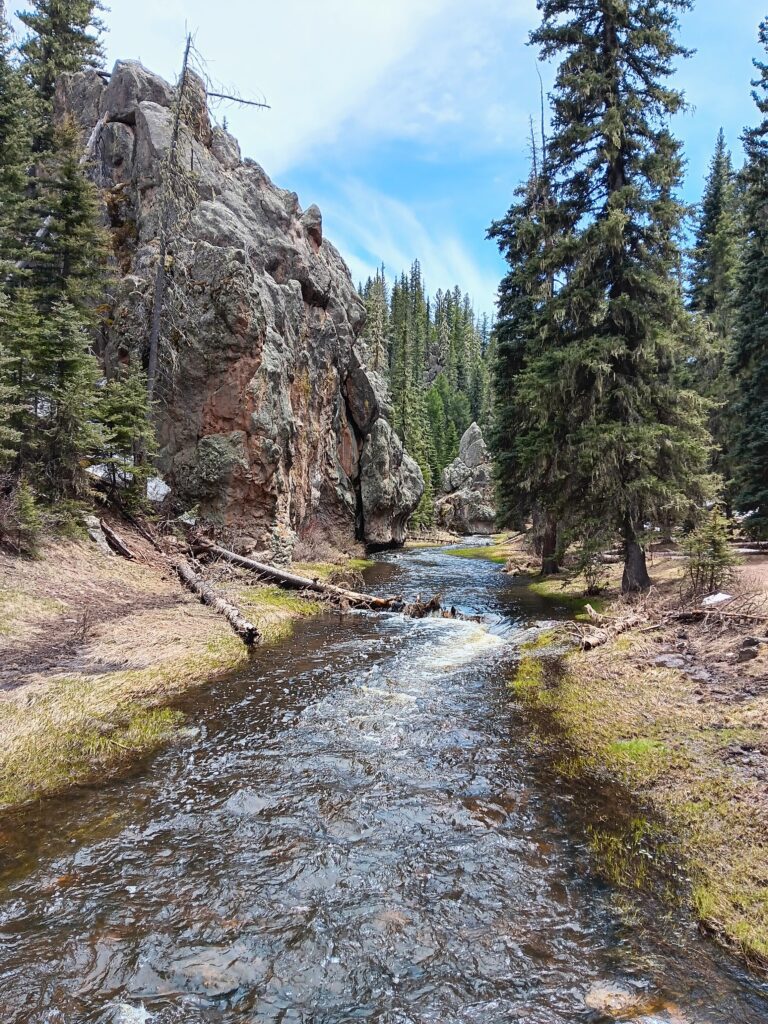

Our last stop of the day, before turning around to drive an hour and a half back to Santa Fe was the Soda Dam. If you look at the picture below, the white over the waterfall as well as all the formations on the left are formed from deposits from calcium carbonate and travertine. The white over the water fall is called a “soda bridge”.
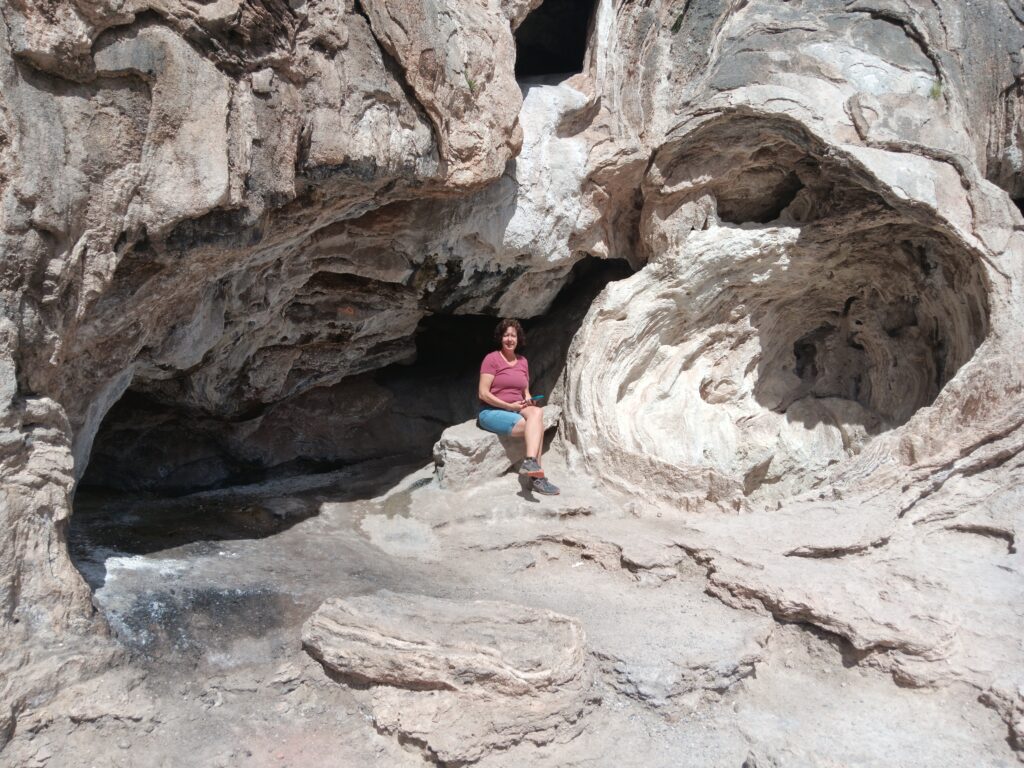

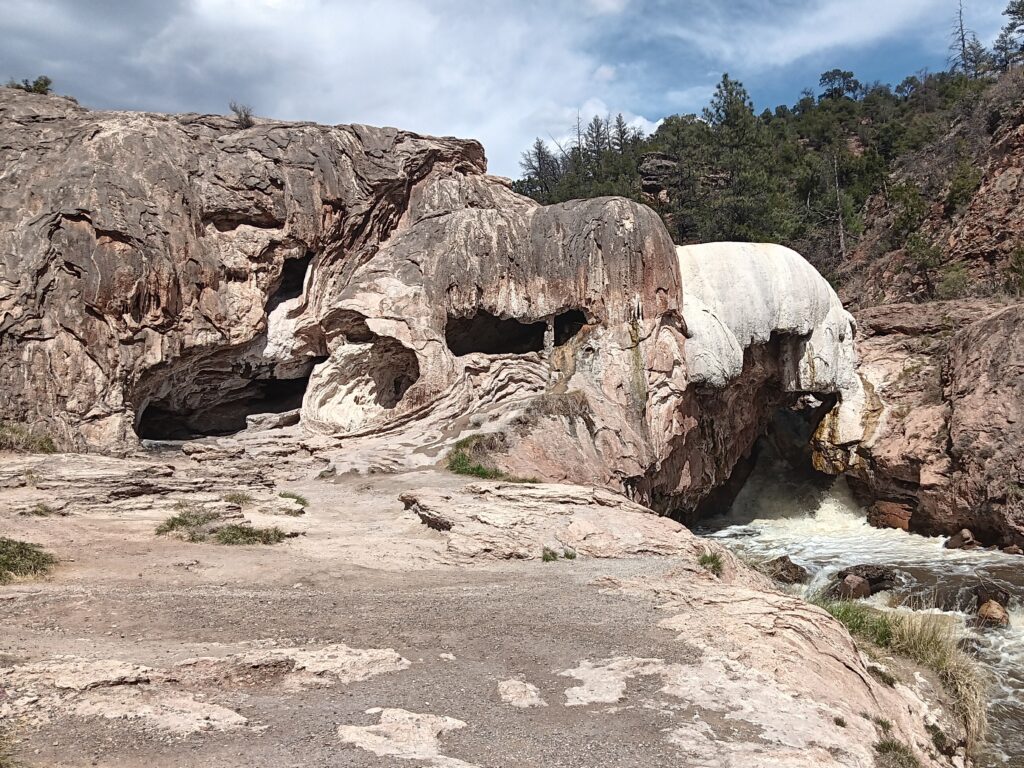

Wrapping it up
The Jemez Mountain Scenic Byway is actually a 132 mile route with so many beautiful places to stop at. We hit the highlights with Bandelier, Valles Caldera, and the short section of the byway that we traveled on, but certainly wish we had set aside more time to explore. Here are some planning highlights below that you may find useful when planning your trip to the Los Alamos regions of New Mexico.
Planning Highlights
Best Time to Visit
The best time to visit Bandelier would be in the spring, before the middle of June, or in the late fall, after the middle of October. The summer months tend to be very hot, and there is a mandatory shuttle from the middle of June to the middle of October.
The best time to visit Valles Caldera is in the summer or fall to view the mountain meadow at its most scenic. Early or late in the day will provide the best opportunity to view elk.
Because of the elevation of these parks, while travel in winter is possible, you should be aware of the road conditions before you set out.
Where to Stay
If you love camping, then consider the Juniper Campground at Bandelier National Monument. There are also plenty of lodging options in both Los Alamos, NM and Santa Fe, NM. If you are mostly interested in scenic beauty and history, Los Alamos would be your better choice for lodging.
How to Get There
There is a major international airport in Albuquerque, as well as a regional airport in Santa Fe.
Bandelier National Monument and Valles Caldera National Preserve are located off NM-4. The Jemez Mountain Scenic Byway is NM-4.
How to Get Around
Bandelier: From mid June to mid October, there is a mandatory shuttle that travels between the White Rock Visitor Center and the Bandelier Visitor Center. If you arrive at the part before 9AM or after 3PM, you will be allowed to drive your car in. You can also ride a bicycle in.
Valles Caldera and Jemez Mountain Scenic Byway are accessible by car year round.
How Much Does it Cost
The entrance fee for one private vehicle is $25 for both Bandelier and Valles Caldera. If you are visiting more than two national parks, you should consider getting the America the Beautiful Pass. This interagency pass gets you into National Parks, National Monuments, and other Federal Recreational Land.
Maps and Publications
Bandelier:
Valles Caldera:

